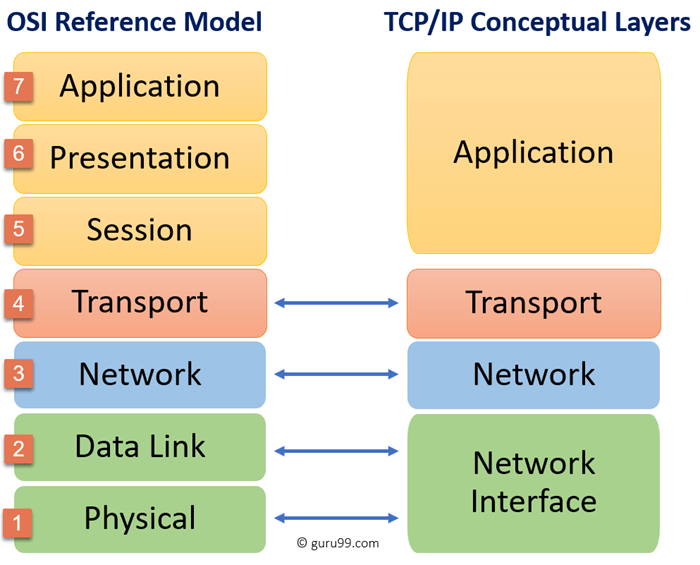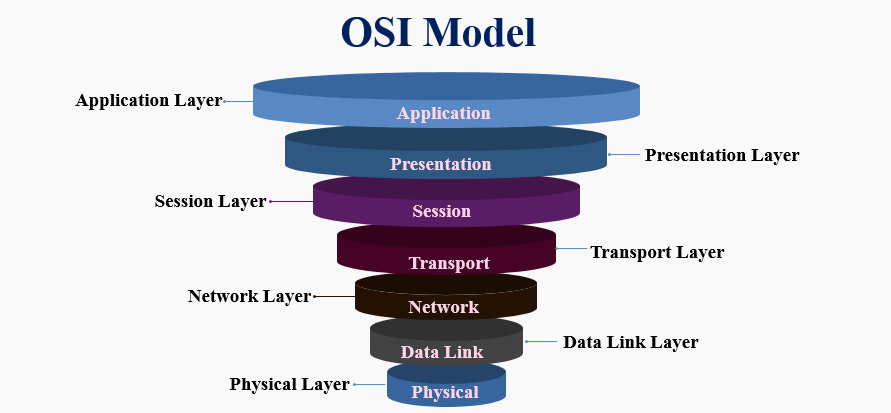What is Network layer
In computer networking, a network layer is a component of a protocol stack that works cooperatively to deliver network services and exchange information. The concept of layers is central to the understanding of how networks function, as it creates a compartmentalized approach, where each layer is responsible for specific functions. This helps to reduce complexity, making network designs more understandable and errors easier to identify and correct.
The network layer is specifically responsible for routing data packets from the source to the destination, dealing with the logical addressing of these packets, and handling errors that may occur during transportation.
Fundamental Networking Concepts
Node
A node in networking is an active electronic device that is connected to the network and is capable of creating, receiving, or forwarding information over a communication channel. Nodes include devices such as computers, printers, routers, and switches. Each node has a unique network address, often an IP address or a MAC address, which distinguishes it from others on the network.
Link
A link refers to the physical or wireless connection between network devices or nodes. It is the medium over which the data travels within the network or between networks. Examples of physical links include copper cables, fiber optics, or coaxial cables. Wireless links, on the other hand, use radio waves, infrared, or satellite transmissions.
Packet
A packet is a small amount of data sent over a network. When data is sent from one place to another on the internet, it is broken down into smaller structured blocks known as packets. Each packet contains the source address, destination address, and the payload - the actual data being transferred. Breaking down data into packets allows for efficient routing and transfer of data across networks.
Protocol
A protocol is a set of rules that governs the data communication over a network. The rules define the format, timing, sequencing, and error control. It ensures reliable and secure data transmission. Some common protocols include HTTP, FTP, TCP/IP, and UDP. Each protocol is designed for specific purposes and operates at different layers of the network model.
OSI Model
The Open Systems Interconnection (OSI) model is a conceptual framework used to understand and describe how different network protocols interact and work together to provide network services. The model comprises seven layers, each layer having specific tasks related to network communication.
Layer 7: Application Layer
The Application Layer is the highest level in the OSI model and closest to the end-user. It provides a set of interfaces for applications to obtain access to networked services as well as access to the types of network services. This includes everything from file transfers, email, and remote login to network management.
Layer 6: Presentation Layer
The Presentation Layer is responsible for formatting and presenting data in a form that the receiving application can understand. This includes tasks such as data compression, decompression, encryption, and decryption.
Layer 5: Session Layer
The Session Layer establishes, manages, and terminates connections between applications at each end. It sets up conditions during a session, handles transmission errors, and ensures successful delivery of data.
Layer 4: Transport Layer
The Transport Layer is responsible for delivering data from the source to the destination, ideally error-free. It regulates the size, sequencing, and ultimately the transfer of data between systems and hosts. Protocols in this layer, like TCP and UDP, are crucial for data flow control and error checking.
Layer 3: Network Layer
The Network Layer handles the routing of data packets. It decides which physical path the data will take based on network conditions, priority of service, and other factors. The network layer also manages network congestion and packet sequencing.
Layer 2: Data Link Layer
The Data Link Layer provides a reliable link between two directly connected nodes, handles error notification, network topology, and flow control. The data link layer is divided into two sub-layers: the Logical Link Control (LLC) layer and the Media Access Control (MAC) layer.
Layer 1: Physical Layer
The Physical Layer is the lowest layer of the OSI model. This layer contains the physical equipment involved in the data transfer, including cables, switches, and the network interface card on the computer. It is responsible for sending bits from one computer to another and defines the physical characteristics of the network.
TCP/IP Model
The Transmission Control Protocol/Internet Protocol (TCP/IP) model, often referred to as the Internet Protocol Suite, is a framework that defines the protocols used for transmitting data packets over the internet.
What is TCP/IP
TCP/IP is a two-layer program. The higher layer, Transmission Control Protocol (TCP), manages the assembling of a message or file into smaller packets that are transmitted over the internet and received by a TCP layer that reassembles the packets into the original message. The lower layer, Internet Protocol (IP), handles the address part of each packet so that it gets to the correct destination. Each gateway computer on the network checks this address to see where to forward the message.
Comparing the OSI Model and TCP/IP Model
The TCP/IP model is not as well-defined or as comprehensive as the OSI model and has fewer layers. TCP/IP's four layers are: Network Interface, Internet, Transport, and Application. They correspond roughly to the seven layers of the OSI model as follows:
-
Network Interface Layer (similar to OSI's Physical and Data Link layers)
This layer is responsible for data transmission between devices on the same network. -
Internet Layer (similar to OSI's Network layer)
This layer handles the movement of packets around the network. -
Transport Layer (same as OSI's Transport layer)
This layer provides a flow of data between two hosts, managing packet sequencing, error checking, and data recovery. -
Application Layer (encompasses OSI's Session, Presentation, and Application layers)
This layer allows applications to access the network services.

TCP/IP vs OSI Model – Difference Between Them
It's important to note that both models are important for understanding network functions and protocols, but TCP/IP is more commonly used in practical applications due to its straightforward nature.
